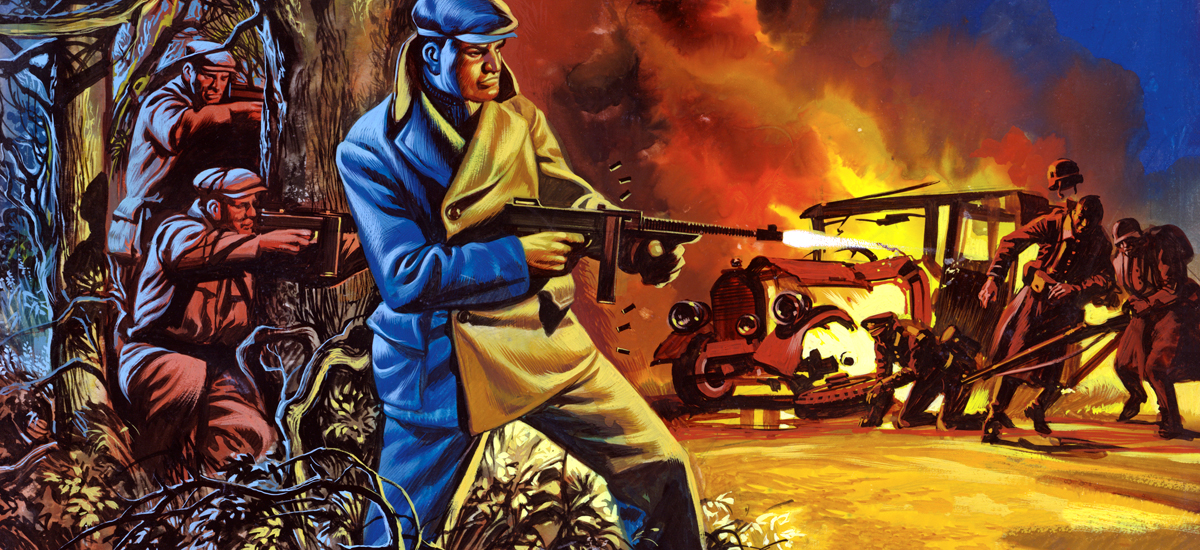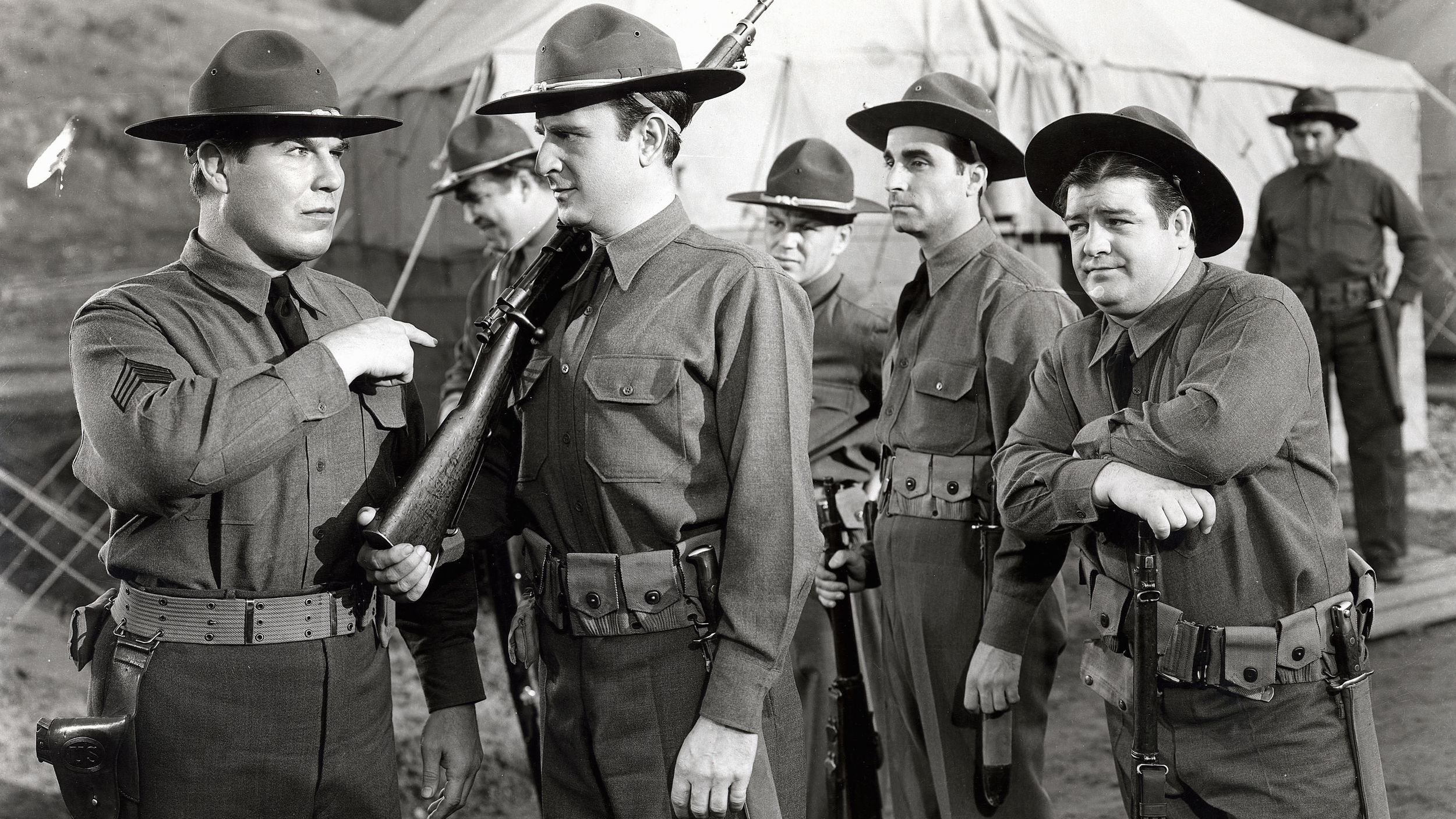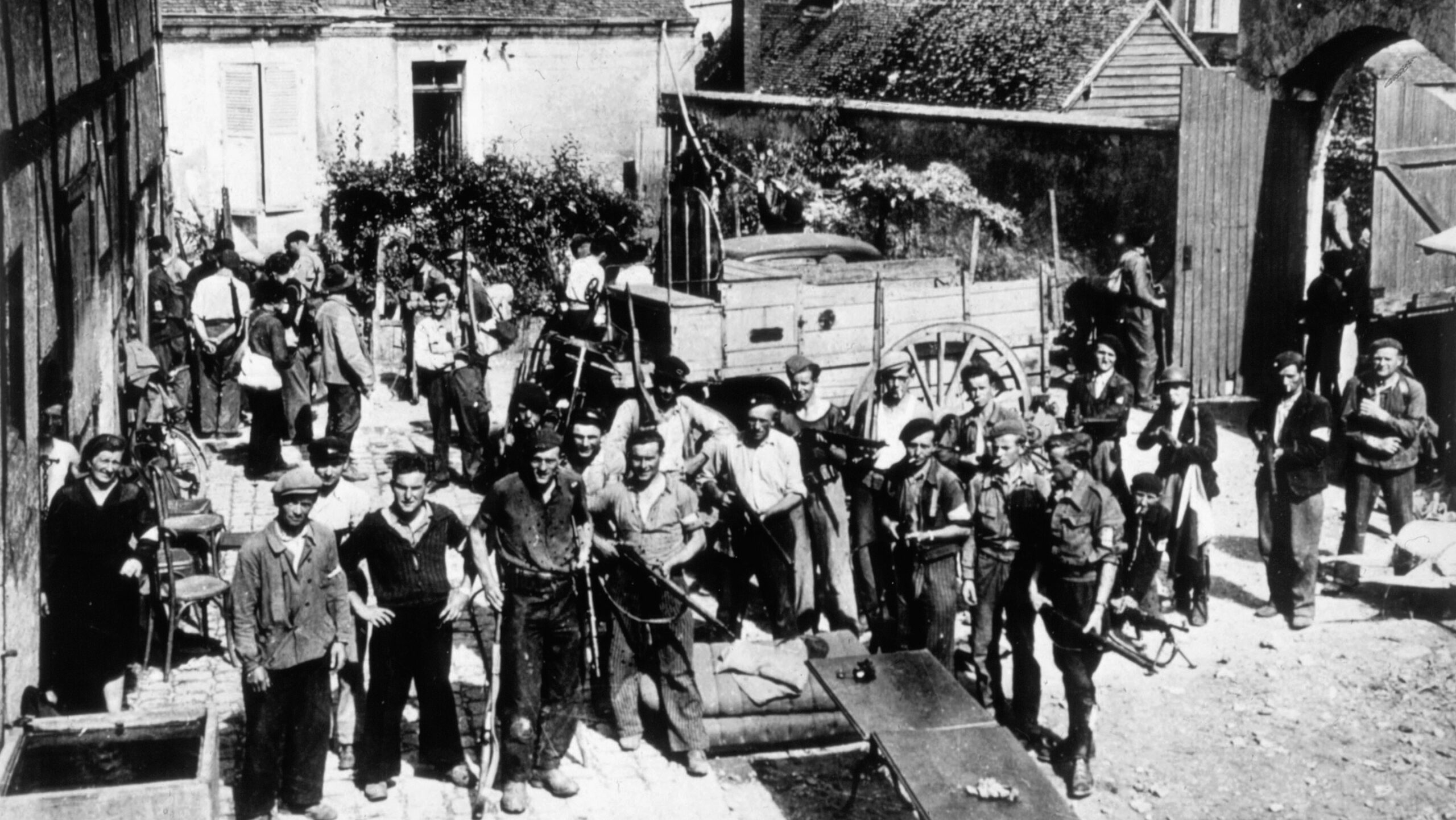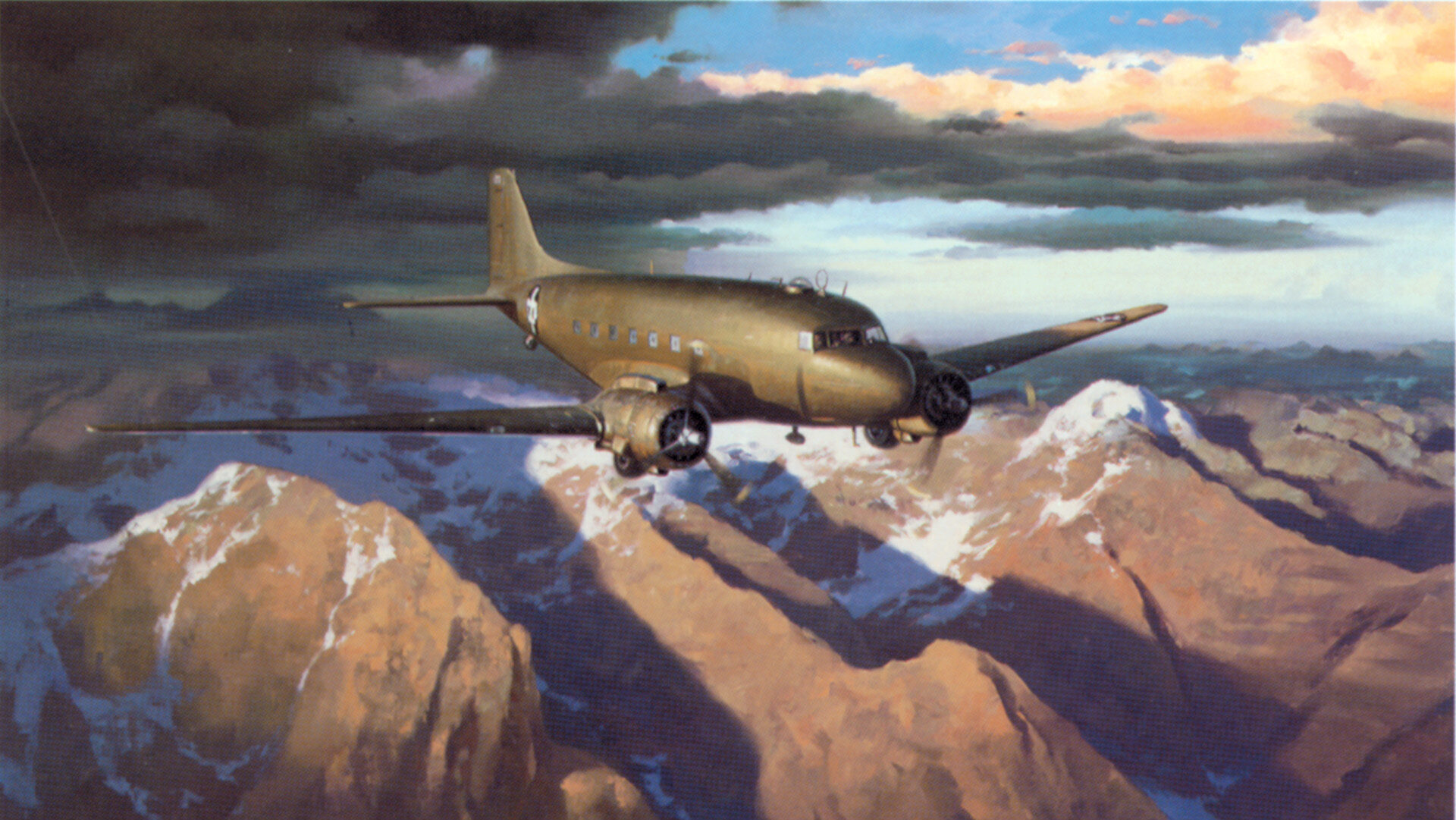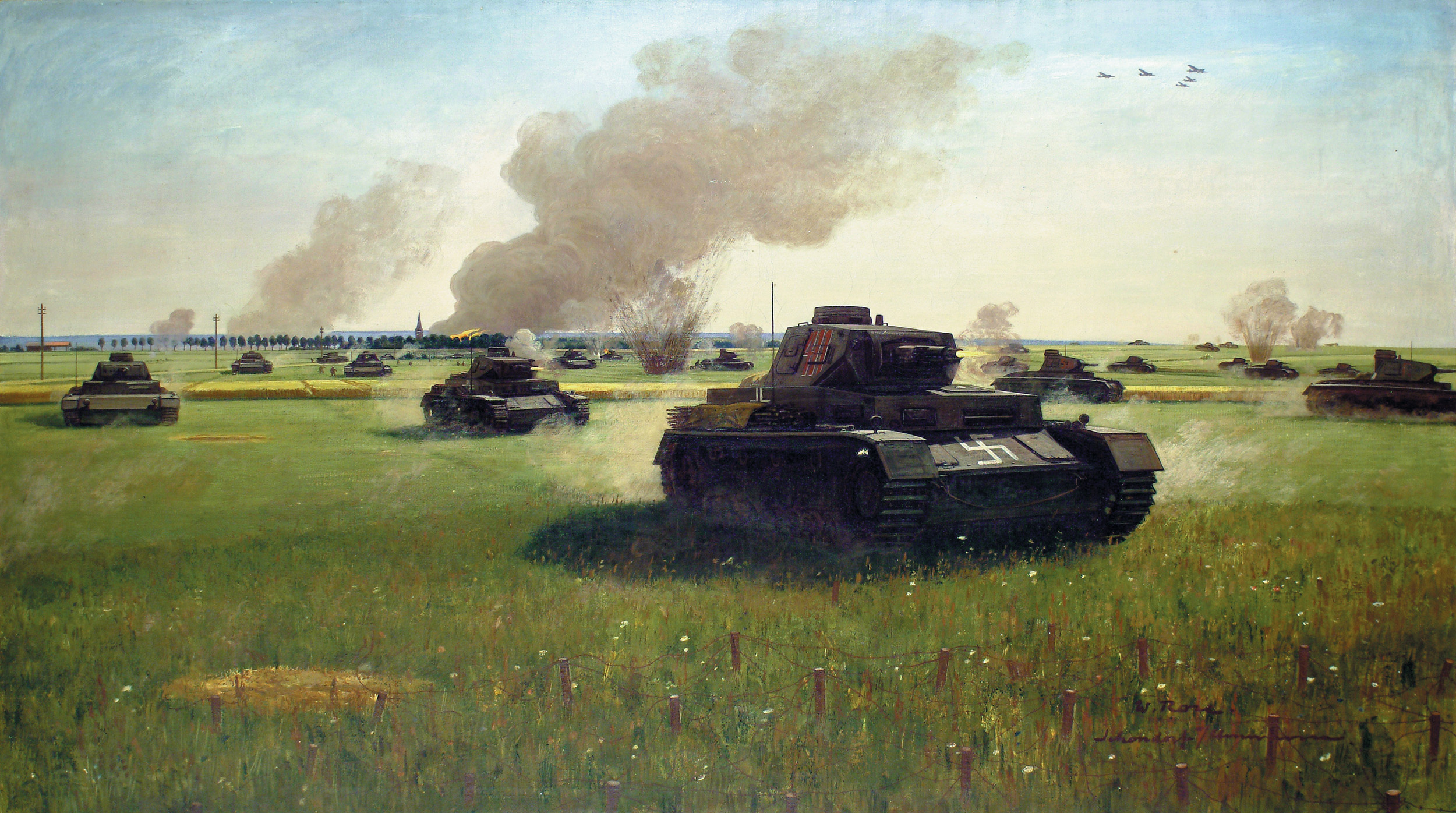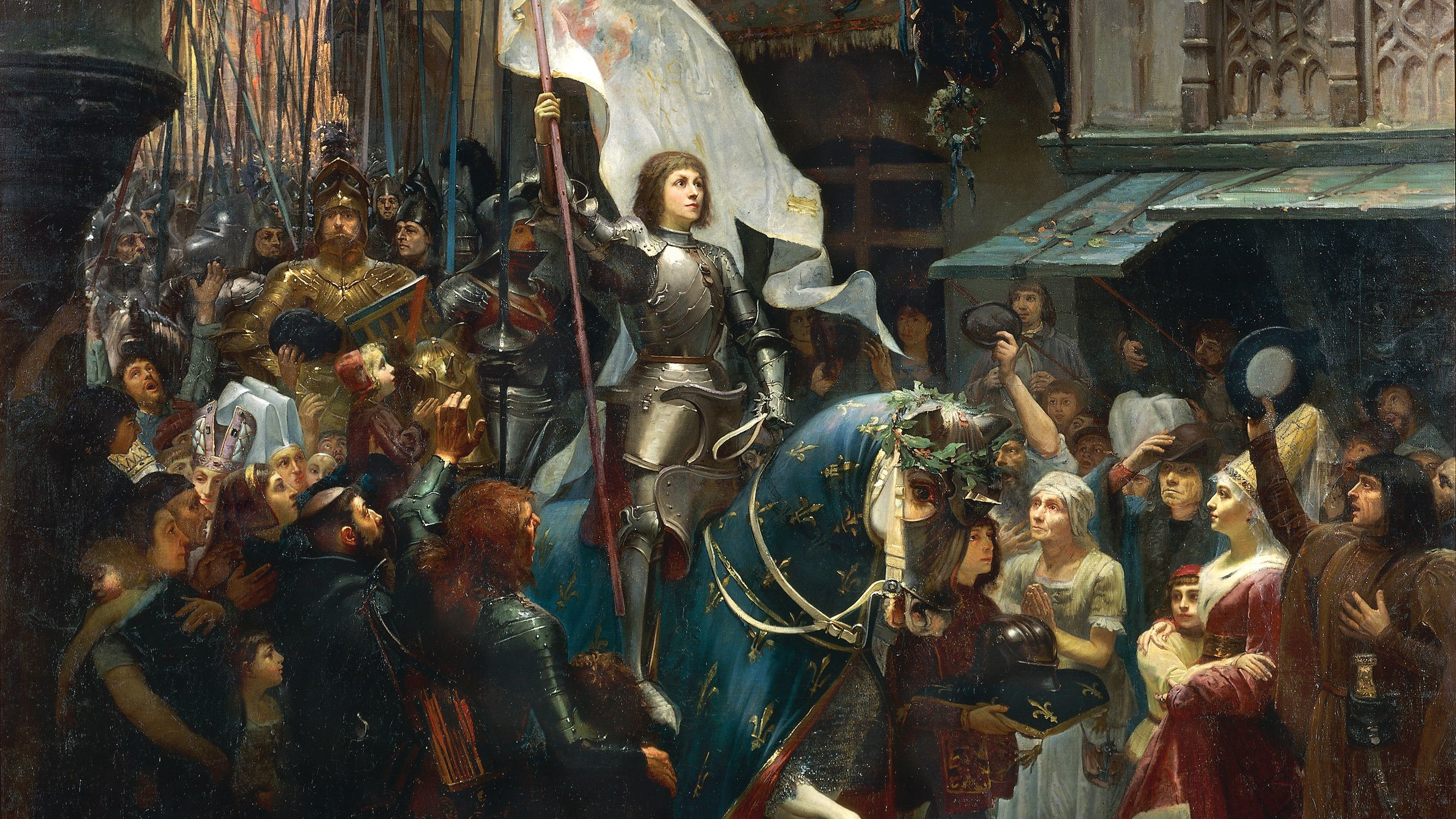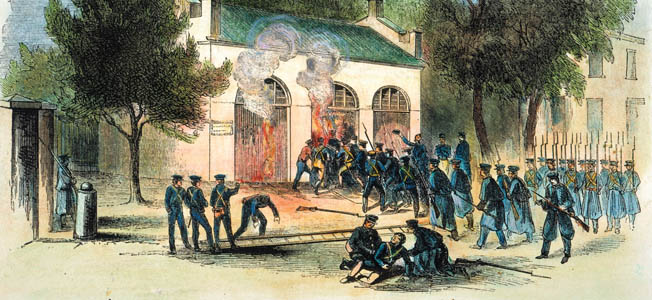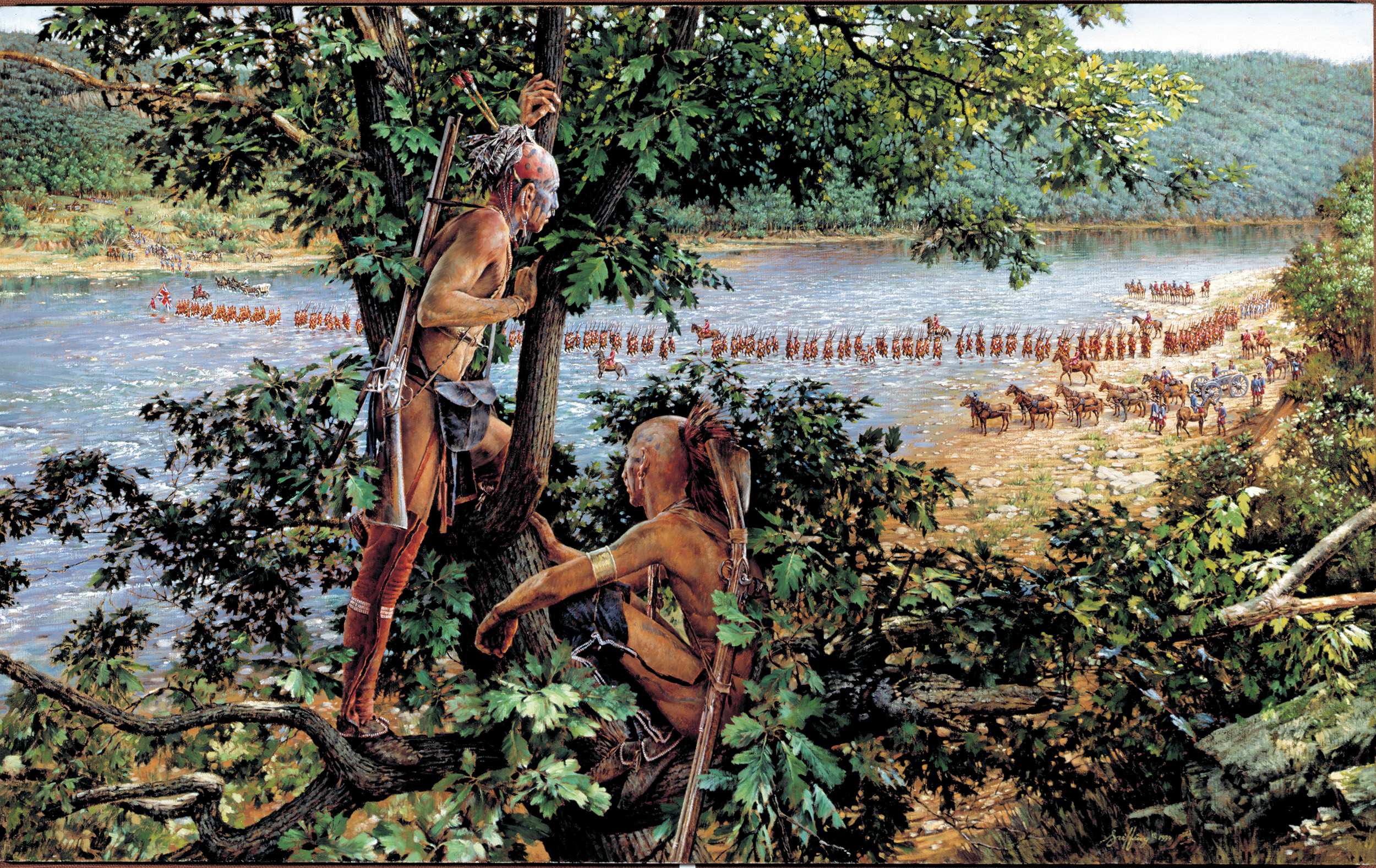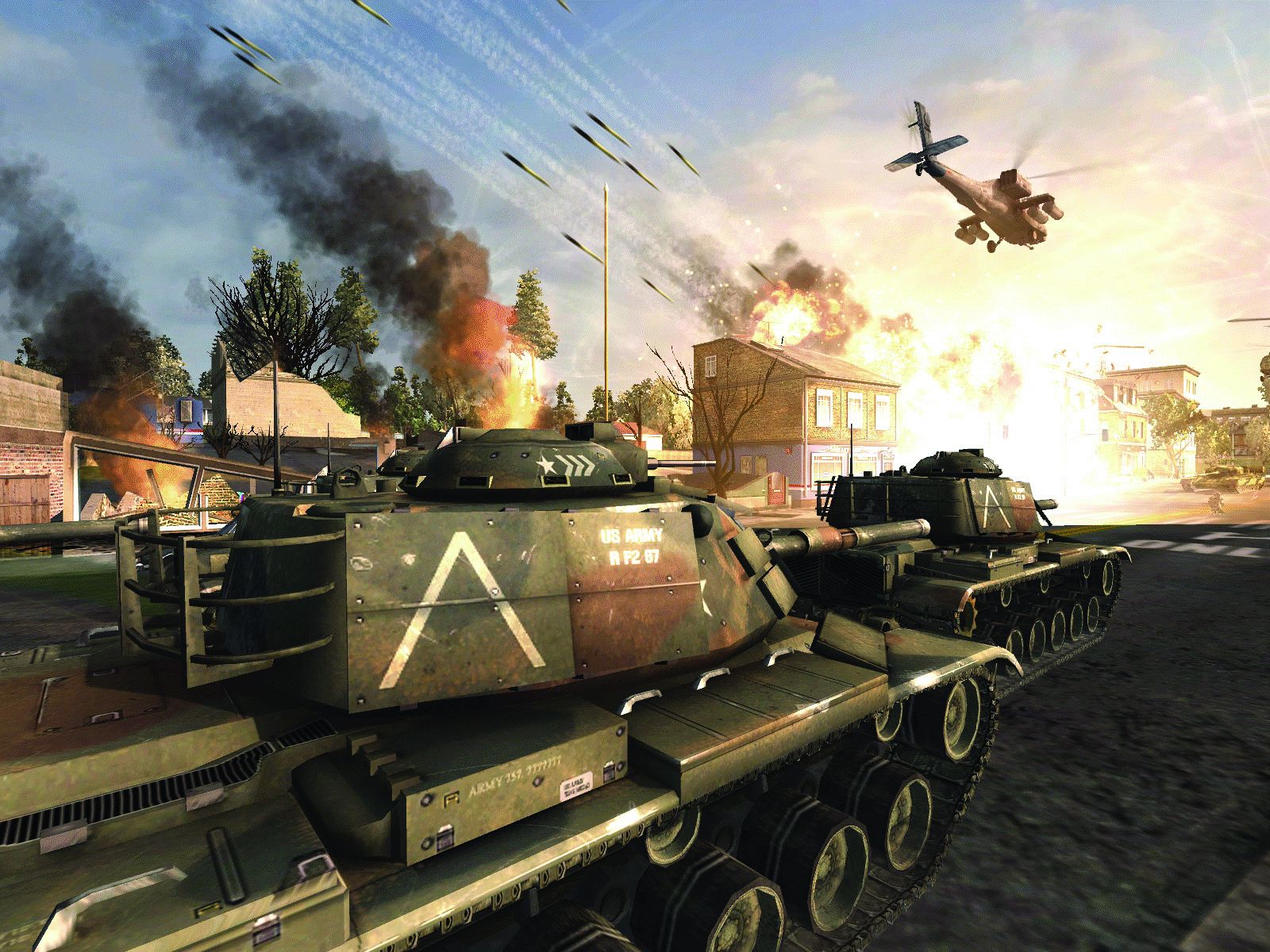By Michael D. Hull
Along with three comrades, one of the Marine Corps heroes is still remembered in the small town of Centron in southeastern France. There is a plaque in the mayor’s office, and the town center bears his name. It is that of Major Pierre, or “Peter,” Ortiz.
Helping to pave the way for the great Allied invasions of northern and southern France in the summer of 1944, a number of U.S. Marines with special language skills and backgrounds like Ortiz served with the Office of Strategic Services (OSS). In German-occupied France and the Balkans, they distinguished themselves in hazardous sabotage and intelligence-gathering missions while serving alongside French Resistance groups and air-dropped squads of the elite British Special Operations Executive (SOE). Their gallant efforts paid off when the invasion forces landed.
One of the most remarkable Marines to serve in World War II, Peter Ortiz and his team—two leatherneck sergeants and a Free French officer—surrendered to the Germans rather than allow them to destroy the town in August 1944.
A veteran of the legendary French Foreign Legion before joining the Marine Corps, the tall, handsome Ortiz emerged from the war as the most decorated U.S. soldier to serve with the OSS. He was a courteous, compassionate man, and his fearlessness amazed all who knew him. Two Hollywood films were loosely based on his exploits.
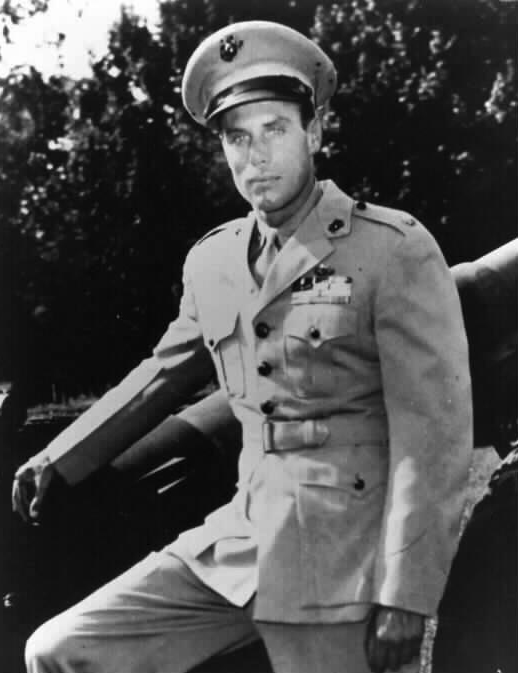
Born in New York City on Saturday, July 5, 1913, Pierre Julien Ortiz was raised in affluence. He was the son of Philippe Ortiz, a French-Spanish art dealer, and his Swiss-born wife, Marie Louise. The boy was sent to a secondary school in France, preparatory to going on to a university in Europe or the United States.
But adventure beckoned, and the multilingual youngster shocked his family in January 1932 when he abruptly left school and made his way to Sidi-bel-Abbes in northwestern Algeria, site of a commune and the headquarters of the Foreign Legion. Nineteen-year-old Pierre promptly joined the 1st Regiment.
Six feet, three inches tall and a natural athlete who loved running, climbing mountains, and riding horses, he wanted to “live a man’s life,” as he told English journalist G. Ward Price, the author of In Morocco with the Legion.Philippe Ortiz, meanwhile, rushed to North Africa in a bid to deter his impetuous son. General Paul Rollet, the “father of the Legion,” listened to his concerns and said that an “irregular” enlistment could be canceled. After Rollet gave him a guided tour of Sidi-bel-Abbes, however, the senior Ortiz was won over. He became a fervent supporter of the Legion and, after returning to Paris, founded the Friends of the Foreign Legion.
His son, meanwhile, adjusted quickly to the harsh life in the North African desert, where the tough legionnaires ranged far and wide—on foot, riding camels, or driving armored cars and trucks—while campaigning against rebellious natives. Ortiz underwent parachute training and took part in skirmishes with Morocco’s fierce Berber tribesmen, who were seeking independence from France. He was promoted to sergeant in 1934, becoming the youngest non-commissioned officer in the Legion. When his hitch was up, he sailed home to his family, now living in La Jolla, California.
When Great Britain and France declared war on Nazi Germany on September 3, 1939, Ortiz knew that he could not stay out of the action and sailed from Canada that October. His ship was torpedoed by a U-boat, but he was able to reach Europe aboard a French destroyer. He then made his way to the Mediterranean and rejoined the Foreign Legion, which was fighting alongside the British Eighth Army in the Western Desert. As part of General Marie Pierre Koenig’s Free French Brigade, the legionnaires fought gallantly against the German Afrika Korps and its Italian allies.
Ortiz was commissioned a second lieutenant and campaigned for two years before his regiment was overrun by the Germans. Now a five-year veteran of the Legion, Ortiz was seriously wounded and taken prisoner. He was shipped to a concentration camp in Austria, where German surgeons patched him up. After partially recovering, Ortiz began several attempts to escape. Eventually succeeding in October 1941, he was able to make his way to neutral Portugal. He then sailed from Lisbon to California for a much-needed rest.
When the Japanese attacked Pearl Harbor and thrust America into the war, Ortiz wanted to rejoin the fight. But he had not fully recovered from his wounds, and the armed forces would not accept him. So, he had to spend several months impatiently getting back into shape before he could pass the Marine Corps physical examination. He joined the corps in June 1942.
At the Parris Island, South Carolina, training depot, Ortiz found himself to be an unusual recruit. He wore French decorations for valor and observed that the training was not as tough as what he had experienced in the Foreign Legion. After later receiving more parachute training and gaining a commission as a reserve second lieutenant, he was sent abroad—ironically back to Morocco.
Ortiz organized a patrol of Arab tribesmen to scout German forces on the Tunisian front. Disguised and fluent in Arabic, Ortiz led his men on a series of successful sorties—until Operation Torch, the Allied invasion of North Africa on November 8, 1942. Then, his allies appeared to be more of a threat than the Germans and Italians. Unsuspecting U.S. troops shot at him and captured him. They did not believe that he was a U.S. Marine, but Ortiz was eventually able to assure an Army officer of his identity and mission.
Ortiz served later with a British Army reconnaissance unit scouting the German 21st Panzer Division. While undertaking a one-man patrol one night, he was shot in the hand and leg. But he managed to repel the enemy troops by lobbing hand grenades and made it back to his unit.
After recovering from his wounds, Ortiz was promoted to captain and seconded to the OSS for special operations in France as a prelude to the planned Allied invasion. Encouraged by General Charles de Gaulle, the Free French leader, the OSS and the SOE were active during 1943 in equipping and training French Resistance fighters as they harassed the German occupation forces. Ortiz’s next destination was to be the Vercors Plateau in the southeastern Haute-Savoie Department, a craggy, forested region that was the clandestine base for 3,000 Maquis patriots.
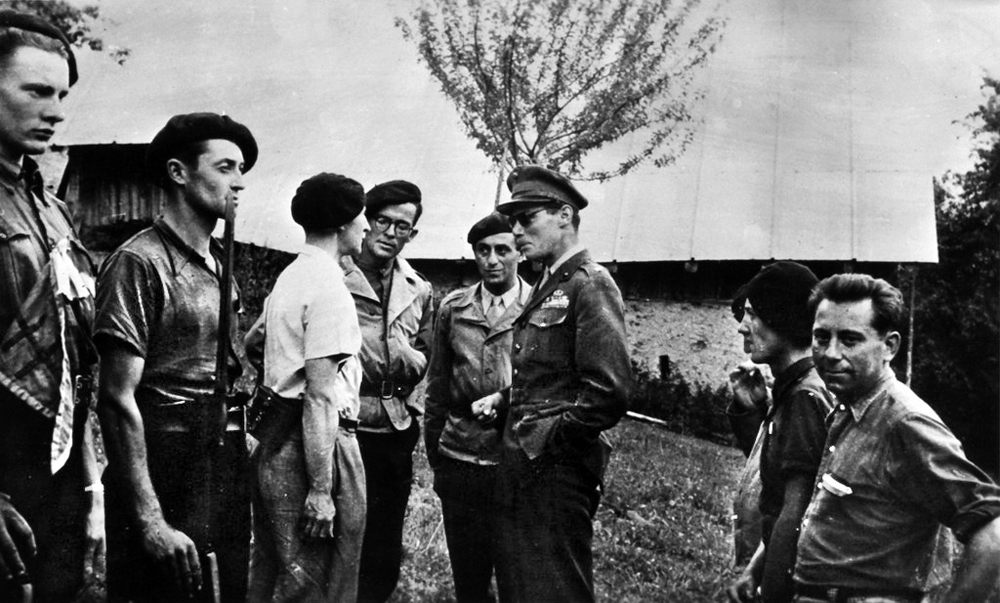
Five months before the planned Operation Overlord, a three-man Allied squad was chosen for a special mission code-named Operation Union. Its members were Ortiz, H.H.A. Thackwaite, a prominent British undercover warrior, and an experienced French radio operator named Monnier. Their objective was to analyze the strength of the Maquis and other resistance groups and determine how effectively they could harass the Germans during and after the Allied invasion.
Wearing civilian clothes, the three men parachuted from a Royal Air Force bomber into the Vercors region on the moonless night of January 6, 1944. After linking up with the resistance fighters, they changed into uniforms to show that it was an official military operation. Finding the maquisards eager to fight but poorly armed and trained, the Allied trio evaluated the situation and sent regular radio reports to London.
Ortiz demonstrated his fearlessness during the operation. Wearing civilian clothes and a cape, he made a habit of strolling into German-occupied towns and listening to local gossip. One night, he found himself sitting in a café near some German soldiers who were grousing about the troublesome maquisards and their hated American allies. It was too much for Ortiz. He sprang to his feet, threw open his cape, and brandished two .45-caliber automatic pistols. He ordered the startled Germans to drink a toast to President Franklin D. Roosevelt and the U.S. Marine Corps and then slipped outside into the darkness.
Ortiz also developed a reputation for thievery. After somehow getting hold of a Gestapo pass, he stole German Army vehicles for the maquisards. When four downed RAF airmen needed help in getting out of France, he guided them to the border of neutral Spain.
The trio succeeded eventually in organizing the resistance fighters into effective fighting units, and they expanded their harassment operations. But the Germans countered, and the Frenchmen had to face superior panzergrenadier battalions with insufficient guns and ammunition. Although they fought bravely, the resistance groups were forced onto the defensive and had to resort to hit-and-run raids when possible.
By May 1944, the Allied planners realized that a more intense effort had to be launched swiftly in support of the resistance. Thackwaite, Ortiz, and Monnier were extracted, and two new specialist teams—code-named Justine and Eucalyptus—were parachuted into the area. Fighting in the Vercors region intensified when the Allied armies landed in Normandy on June 6 and as they pushed inland.
With the Wehrmacht gaining the upper hand in Haute-Savoie, the Allied planners decided to launch a new effort, code-named Union II, to assist the resistance fighters in sabotage and other direct actions against the enemy. Newly promoted to major, Ortiz was given command of a team that comprised five other Marines: Gunnery Sergeant Robert LaSalle and Sergeants John P. Bodnar, Frederick J. Brunner, Charles E. Perry, and Jack R. Risler; Joseph Arcelin, a Free French officer, and Captain Francis Coolidge of the U.S. Army Air Forces. Ortiz carried a million francs for the maquisards, and the team was to airdrop 864 containers of weapons and other supplies.
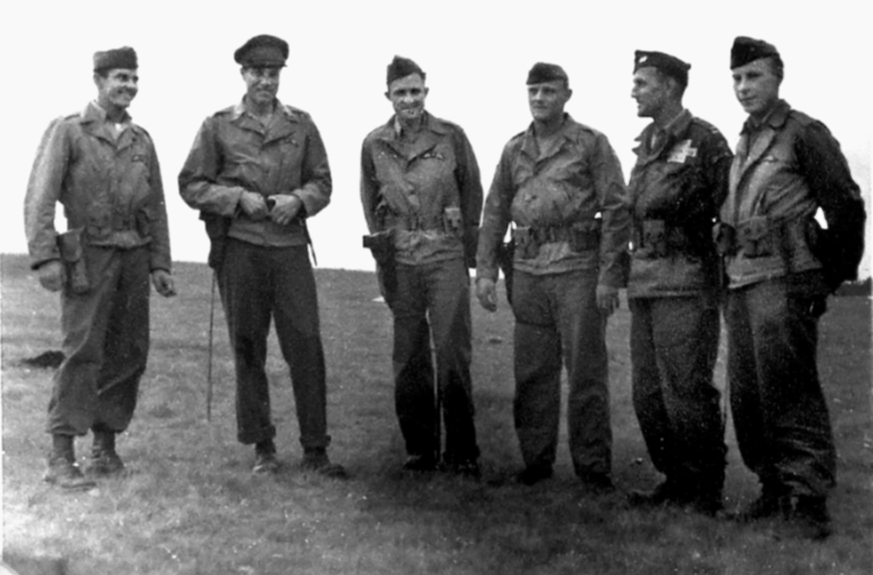
The Union II mission got underway on August 1, 1944, two weeks before Operation Anvil, the Allied invasion of southern France, when B-17 heavy bombers of the U.S. Eighth Air Force’s 388th Bombardment Group took off from Knettishall Airfield in Suffolk, England. When the plane carrying the Union II team swung in low over the French Alps to its drop zone, Ortiz and his men jumped. Their parachutes were yanked open by cables attached to the bomber. Tragically, Sergeant Perry’s cable snapped, and he fell to his death.
After solemnly burying their comrade, Ortiz and his men spent several weeks instructing local maquisards in the use of their new weapons before making their way to the town of Beaufort, where they linked up with a contingent of the FFI (French Forces of the Interior). The Americans and Arcelin then moved on under German shellfire to the town of Montgirod.
When the enemy blasted the town because it had harbored resistance fighters, Ortiz and his men were forced to hide in the surrounding mountains with the French Bulle Battalion. But they had to stay on the move because the Germans had been on their trail and eventually surrounded them. Ortiz, meanwhile, lost another man. Gunnery Sergeant LaSalle was felled by a high fever and had to be tended by an English-speaking priest.
After bidding farewell to him at twilight one day, Ortiz and his five survivors crawled through mountain gullies and managed to breach the enemy lines. Operation Anvil, meanwhile, had just gotten underway, and German forces were starting to retreat. The Union II men made their way to the village of Longefoy where the people gave them food and shelter for the night. On the following day, August 16, Ortiz and his men trudged on to the town of Centron.
They marched in single file through the streets but then ran into an enemy convoy. German soldiers jumped from the trucks and opened fire while armored cars moved in with machine guns firing. The Allied team hastily dispersed. Brunner and Coolidge dived into a river and escaped, while Major Ortiz and the others fled back into Centron. A house-to-house melee raged as Ortiz, Arcelin, Bodnar, and Risler held off a German battalion.
The four men intended to fight on until their ammunition ran out, but townspeople told them that Centron would receive the same brutal treatment as Montgirod and other French communities unless they surrendered. The town would be leveled and its residents executed. So, Ortiz ordered his three companions to escape while there was still a chance, but they refused to leave him alone. Ortiz strode out under a white flag and negotiated with Major Kolb, the German battalion commander. The American promised that he and his men would lay down their arms if the town was spared from retribution. Kolb agreed and kept his word.
After the surrender, Arcelin tried to escape but was swiftly recaptured. Sergeant Brunner, meanwhile, linked up with Gunnery Sergeant LaSalle, and they headed separately for safety. LaSalle went south and met Anvil troops who were moving northward, and Brunner met a resistance group that helped him reach England.
Ortiz and the other OSS warriors were herded north to Marlag-Milag Nord, a naval prisoner-of-war camp at Westertimke, near Bremen. Ortiz made several unsuccessful attempts to escape during the long journey and was beaten. But he and his comrades were glad to find that Marlag-Milag was one of the more hospitable stalags. And there was reason for hope. Through a black market network active within and outside the camp, the prisoners learned that troops of the British 21st Army Group were getting close.
Escape attempts were forbidden, but Ortiz—the senior American prisoner there—decided to try anyway. Along with Navy Lt. (j.g.) Hiram Harris, he made his first attempt on December 18, 1944. After spending more than an hour cutting a hole in a wire fence, Ortiz made it into a field outside the compound. But a patrol nabbed Harris and sounded the alarm. Spotlights zeroed in on Ortiz, and he, too, was recaptured. The two men were roughed up and placed in solitary confinement.
Major Ortiz refused to give up. In February 1945, he planned another escape attempt, this time with Marine Lieutenant Walter W. Taylor, another OSS operative, who had been captured near Nice. The pair scrounged a small supply of food, clothes, and maps, but the plan was squelched on April 10 when the camp commandant abruptly ordered the POWs to prepare to move. There was confusion while the prisoners assembled, and many others found hiding places in the camp.
Less than three hours after the commandant’s order, the column set out, heading northeast toward the Baltic port city of Lubeck. The grueling trek was expected to take eight days. The German guards kept a close watch on Ortiz. After the prisoners had trudged along for three hours, chaos suddenly erupted when RAF Spitfire fighters swooped down and started strafing the area. Taking advantage of the breakdown, Major Peter Ortiz, Lieutenant Taylor, an Army Air Forces lieutenant, and a Royal Marine warrant officer dashed into the woods and waited quietly until the column eventually moved on.
The four men listened for sounds that would indicate the approach of advancing British troops, but there were none. Hiding by day and wandering by night, they waited for 10 dispiriting days. Weary and sick, they then agreed that there was little recourse but to return to Marlag Nord, where there were huts, blankets, and food. After making their way back, they found that few guards were left and that the remaining Allied prisoners had virtually taken charge of the compound.
A few more days of waiting followed while the POWs listened to the distant thunder of artillery. Then, on April 28, 1945, spirits soared in the camp when the plaintive sound of bagpipes was heard. Spearhead tanks of Lt. Gen. Sir Brian G. Horrocks’ British XXX Corps rumbled in and liberated Marlag Nord. Horrocks’s forces had taken nearby Bremen the day before.
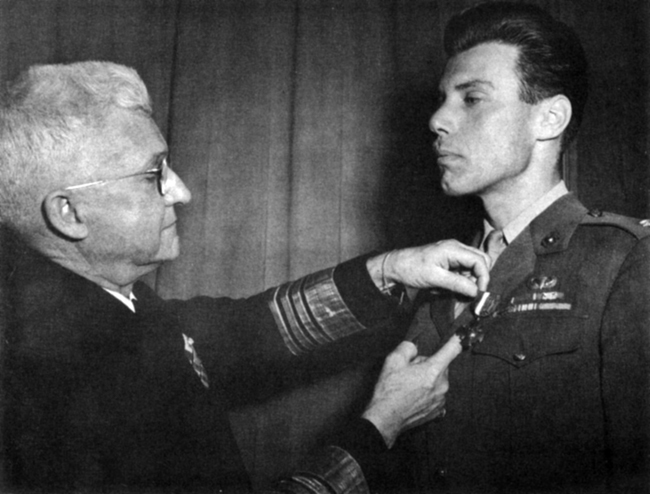
The indestructible Major Ortiz was evacuated to Brussels, where he reported to the OSS headquarters and asked for another combat assignment before returning to California. He was there, being briefed for a mission to Indochina, when the European war ended.
For his “extraordinary heroism, outstanding loyalty, and self-sacrificing devotion to duty” which “contributed materially to the success of operations against a relentless enemy,” Ortiz, who reached the rank of colonel, was honored by three nations. The French cited him as the “hero of the Haute-Savoie” and awarded him the Legion of Honor; the Croix de Guerre with two palms, gold and silver stars, and five citations; the Croix de Combattants; the Ouissam Alouite; and the Medaille Coloniale. Great Britain made him an officer of the Order of the British Empire, and his own country gave him the Navy Cross with gold star, the Legion of Merit, and two Purple Hearts.
Ortiz left the service in 1946, but stayed active in the Marine Corps Reserve. He made a new career as a technical and dialogue consultant in the California film industry and worked often with director John Ford, who also had served in the OSS. The two became good friends. Ortiz married his sweetheart, Jean Morlan, in 1948, and they had a son, Peter J. Jr., who became a lieutenant colonel in the Marine Corps. The couple eventually settled in Arizona, where Ortiz pursued many interests, including art, history, religion, and film-making.
The World War II hero found work, meanwhile, as an actor. He had small parts with John Wayne in Ford’s Rio Grande in 1950 and The Wings of Eagles in 1957. He also was cast in the 1949 Henry King classic Twelve O’Clock High and in Spy Hunt (1950), When Willie Comes Marching Home (1950), Sirocco (1951), Retreat Hell! (1952), Jubilee Train (1954), King Richard and the Crusaders (1954), Son of Sinbad (1955), and Seventh Cavalry (1956).
Ortiz died in 1988 and was buried with full honors in Arlington National Cemetery. Representatives of the British and French governments attended. He was honored in Centron on August 1, 1992. Former Sergeants Bodnar and Risler were present when the town center was named Place Peter Ortiz.
The Marine officer’s World War II exploits inspired two Hollywood films. The first was Henry Hathaway’s semi-documentary 13 Rue Madeleine (1947), starring James Cagney, and Lewis Seiler’s Operation Secret (1952), with Cornel Wilde, Steve Cochran, and Karl Malden.
